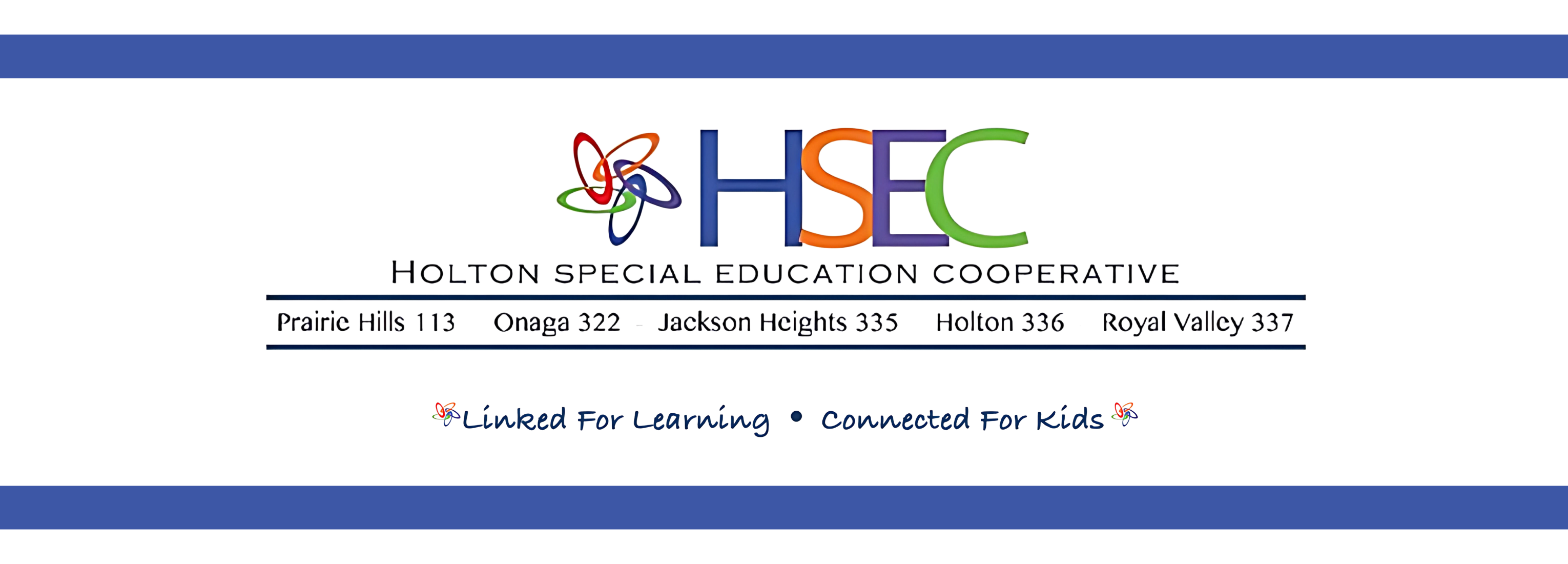District
Quick Links
Prairie Band Potawatomi

About the Cooperative
Holton Special Education Cooperative provides services to students with disabilities for grades PreK-12. USD 336 Holton houses the cooperative budget for all five member-districts within the USD 336 Holton Unified School District budget. This fund is not sourced from local taxes levied.
There are five member districts to the cooperative:
• USD 113 - Prairie Hills
• USD 322 - Onaga
• USD 335 - Jackson Heights
• USD 336 - Holton
• USD 337 - Royal Valley
The cooperative supports and staffs the educational programs within each of these five districts who pool their state and federal special education funding to ensure that exemplary programs are provided equitably across the cooperative.
Cooperative Contacts
Amy Haussler, Director
Todd Schroeder, Assistant Director
Melissa Peven, Coordinator
Lori Spaar, MIS Clerk
Joni Woltje, Administrative Assistant
Early Childhood Screenings
The Holton Special Education Cooperative and its member school districts provide free developmental screenings for children birth through age five that live in the following districts:
• Onaga, USD 322
• Jackson Heights - USD 335
• Holton - USD 336
• Royal Valley - USD 337
• Prairie Hills - USD 113
Screenings are conducted throughout the year and appointments are necessary. The screening of children who may have developmental delays includes evaluation of hearing, vision, speech, language, thinking skills, coordination, personal/social skills, and self-help skills. Please contact your home district for details.
When Should You Have Concerns about Your Young Child's Development?
The following items are some warning signs that problems may develop in your child's development; they do not necessarily mean that problems are or are not already present.
Hearing--
If the child...
- does not startle at loud noises
- does not turn to face sounds and noises by 6 months
- has frequent earaches, runny ears, or runny nose
- does not understand spoken conversation or directions
- talks in an unusually low voice
- appears to ignore people speaking
Vision--
If the child...
- does not look at toys or people and try to reach for them
- frequently rubs eyes
- has red, watering or encrusted eyes
- sometimes or always crosses one or both eyes
- does not notice distant objects
- frequently bumps into furniture or other objects
Self-Help--
If the child...
- has trouble sucking a bottle as a new born
- does not use a spoon by age 2
- is not out of diapers by age 3
- cannot sit and attend to a story being read by age 3
- does not play cooperatively with other children by age 4
- cannot dress themselves by age 5
- does not play with one toy for 3 minutes by age 3
Thinking--
If the child...
- does not respond to name by age 1
- does not point to eyes, ears, nose, and mouth by age 2
- does not know "big" and "little" by age 3
- does not know three colors by age 4
- does not count to five by age 5
Coordination--
If the child...
- is unable to sit by age 1
- is unable to walk by age 2
- is unable to throw and kick a ball by age 3
- is unable to run by age 4
- is unable to hop on one foot by age 5
Speaking--
If the child...
- does not babble and coo as an infant
- cannot say the names of a few people and toys by age 2
- does not use 2 word sentences by age 2
- cannot tell you about two things that happened to them by age 3
- is not easily understood by people outside the family by age 4